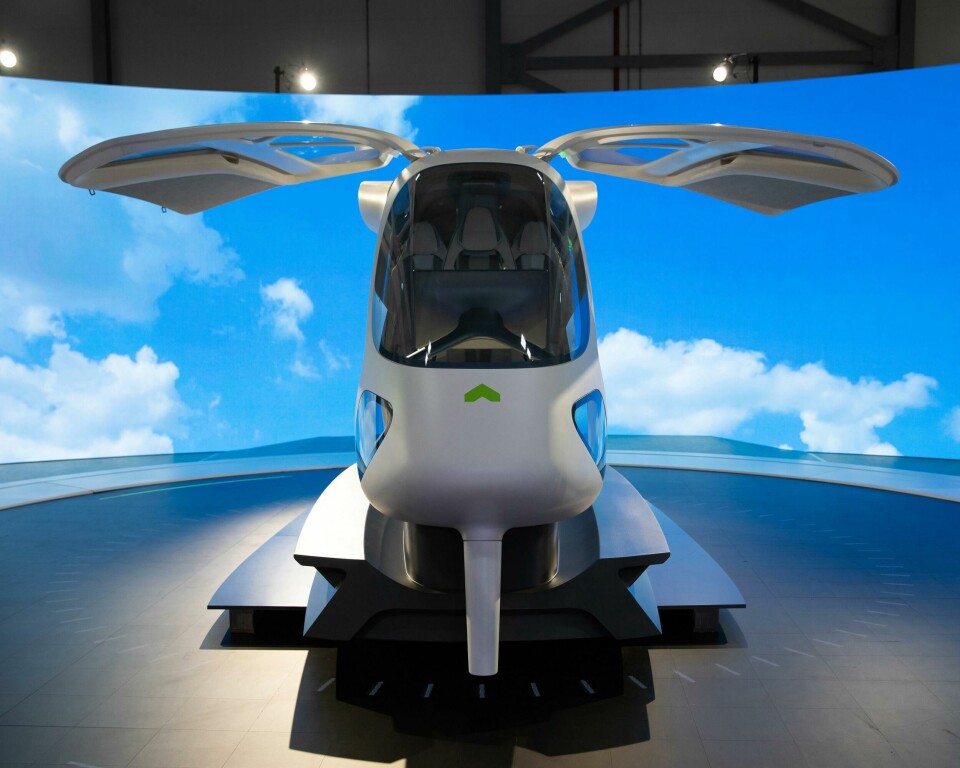
First Sight: Hyundai’s Donckerwolke reveals flying taxi
Car Design News caught up with Hyundai’s chief creative officer at the reveal of Supernal’s aerial taxi, a new direction that it hopes will fly
Hyundai Motor Group’s latest creation is an electric vertical take-off and landing (eVTOL) flying taxi for its mobility brand Supernal. The full-size interior prototype was masterminded by Luc Donckerwolke, the Group’s chief creative officer, and unveiled this week at the UK’s Farnborough Air Show. Car Design News went along to see the concept and find out more.
“When I re-joined the Group in late 2020 I was asked to support the Urban Air Mobility [UAM] project as the team was just getting together, leveraging designers from our Irvine, Frankfurt and Korea studios,” he told CDN. “There were about 17 of us interacting virtually with UAM, as at that time most of the world was still in ‘lockdown’. We didn’t start with styling, but by looking at all possible configurations, getting to know the mission that had to be fulfilled and then setting up the main parameters, the power, battery, engine layout, package and aerodynamics.
From November 2020 to March 2021 we produced 80 concepts with derivatives – 120 ideas in total – with more or less the same cabin but with different architectures and ways of orchestrating the wings. It wasn’t just interior design, but all of it.”
Sitting inside the full-size, five-seat, forged carbon fibre cabin on the Supernal stand at Farnborough, Donckerwolke explained that a biomimicry approach was important – in trying to learn from nature how bone-like structures and materials can be strong, lightweight, integrated and functional.
Accordingly, the single front pilot’s seatback is made of aluminium that connects to both floor and ceiling to help the structural rigidity of the whole cabin, while the second and third-row twin seats are made of a new type of lightweight recyclable carbon fibre which Donckerwolke believes will be production-feasible by 2028, when this flying taxi is scheduled to go into service.
We’ve not been in this field before so it’s really important to us not to be ‘me too’
The seats themselves have minimal upholstery but feel comfortable enough to sit on for the use case targeted – namely intra-city journeys including shuttling passengers from airports on the outskirts into city centres, like LAX to downtown LA, or Heathrow to central London. The second- and third-row seatbacks’ structures also house extra functions beyond supporting the human frame, the outer bars doubling up as grab handles and the ‘floating’ inner dome-shaped elements suitable for hanging a coat.
Donckerwolke is excited by the possibilities of 3D-printed parts for some interior elements to save on tooling costs, and in reducing complexity by having heating controlled by technology somewhat like domestic underfloor heating – including recycling battery heat through certain surfaces – rather than ‘forced air’ through conventional air vents.
Vertically-deployable centre armrests rise up close to passengers’ hands to adjust aircon and also provide slots for smart phones and iPads to charge, while a magnet clip on the seatbacks creates a space to attach and view your phone’s screen. A larger built-in screen sits on the pilot’s seatback to impart departure information and more, while the pilot gets a larger screen still and two joysticks – borrowed from the 2020 Hyundai Prophecy concept perchance? – to monitor and control the flight.
The project is a serious one for Hyundai though. It has ex-NASA veteran Jaiwon Shin, president of Hyundai Motor Group and CEO of Supernal at the helm, and Donckerwolke has been tasked with working on many configurations – two-seat, VIP, cargo and also emergency applications – for both commercial and private operators.
As Donckerwolke concluded: “We’ve not been in this field before so it’s really important to us not to be ‘me too’. We have the advantage of not being in search of investors, like many of our rivals, so it’s about making the right product at the right time. We have to make sure we end up with a product that is actually the most user-friendly.”












